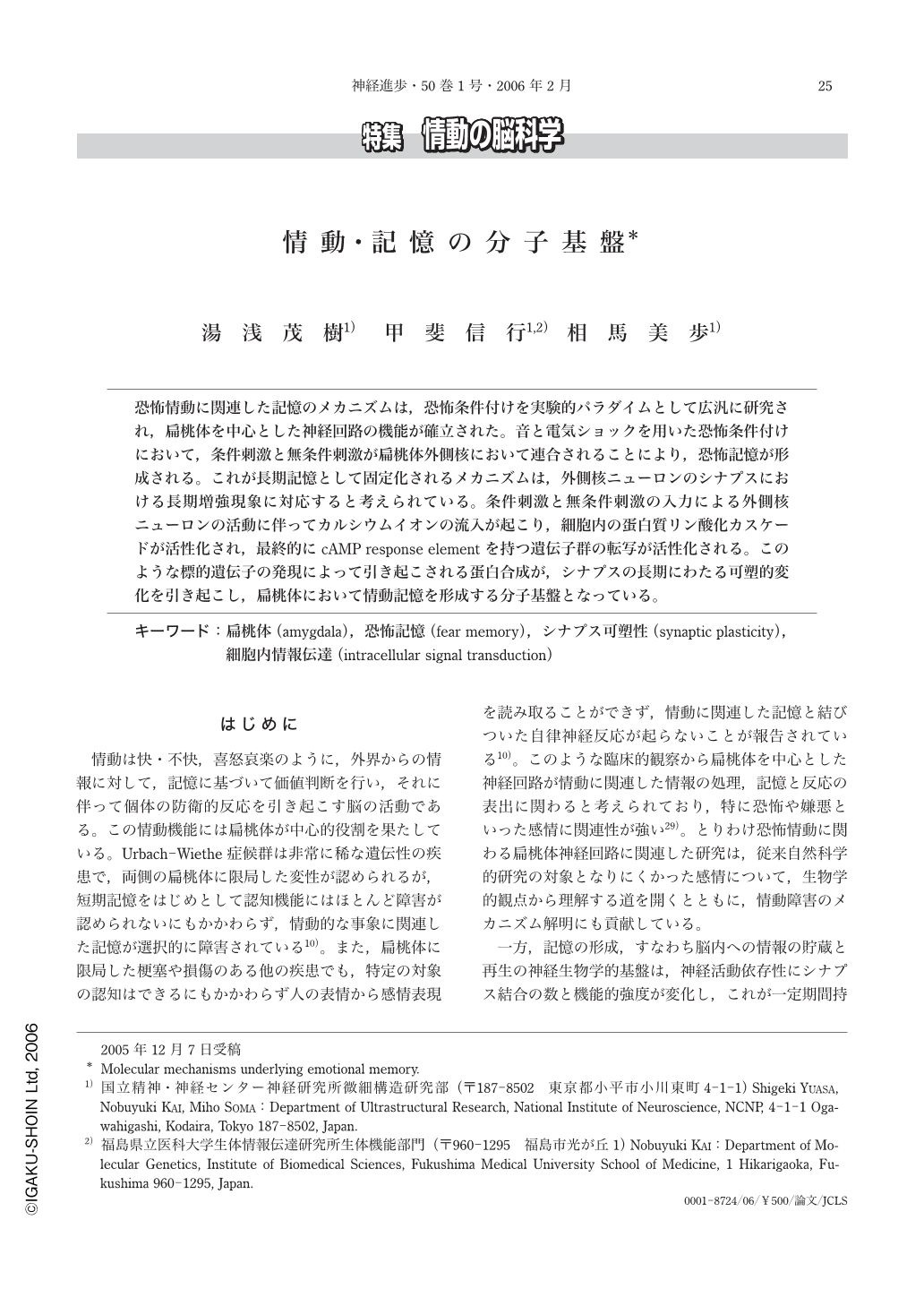Japanese
English
- 有料閲覧
- Abstract 文献概要
- 1ページ目 Look Inside
- 参考文献 Reference
恐怖情動に関連した記憶のメカニズムは,恐怖条件付けを実験的パラダイムとして広汎に研究され,扁桃体を中心とした神経回路の機能が確立された。音と電気ショックを用いた恐怖条件付けにおいて,条件刺激と無条件刺激が扁桃体外側核において連合されることにより,恐怖記憶が形成される。これが長期記憶として固定化されるメカニズムは,外側核ニューロンのシナプスにおける長期増強現象に対応すると考えられている。条件刺激と無条件刺激の入力による外側核ニューロンの活動に伴ってカルシウムイオンの流入が起こり,細胞内の蛋白質リン酸化カスケードが活性化され,最終的にcAMP response elementを持つ遺伝子群の転写が活性化される。このような標的遺伝子の発現によって引き起こされる蛋白合成が,シナプスの長期にわたる可塑的変化を引き起こし,扁桃体において情動記憶を形成する分子基盤となっている。
The mechanism of fear memory formation has been extensively investigated by fear conditioning as the experimental paradigm, and the significance of amygdalar neural circuit has been established as the basis of emotion. Conditioned fear memory is formed by the association between conditioned and unconditioned stimuli in the amygdala. The mechanism of fear memory acquisition and consolidation as the long-term memory is now considered to correspond to the long term potentiation(LTP)at the synapses in the amygdalar lateral nucleus. The molecular mechanism of fear memory consolidation is now extensively investigated as a good model for the studies of synaptic plasticity that continues for a long period of time. The association between the conditioned and unconditioned stimuli triggers calcium influx through NMDA receptors or L-type calcium channels in the amygdala. The increase in the intracellular calcium ions leads to the activation of the cascade of protein kinases such as protein kinase A, PI-3 kinase and mitogen-activated protein kinase(MAPK). The activated kinases then translocate into the cellular nucleus in which they phosphorylate cAMP response element-binding protein(CREB)to initiate gene transcription and translation. The synthesized proteins then modify the structure and function of the synapses of amygdalar neurons and these long-lasting synaptic changes are considered to be the molecular basis of conditioned fear memory. Such intracellular signal transduction is involved not only in the mechanism of fear memory formation but also that of fear memory extinction. Various mice that exhibit defective fear memory and emotional behavior have been generated by gene targeting and transgenic strategy and the molecular dissection of emotional neural system is now one of the very active fields of neuroscience research.

Copyright © 2006, Igaku-Shoin Ltd. All rights reserved.


